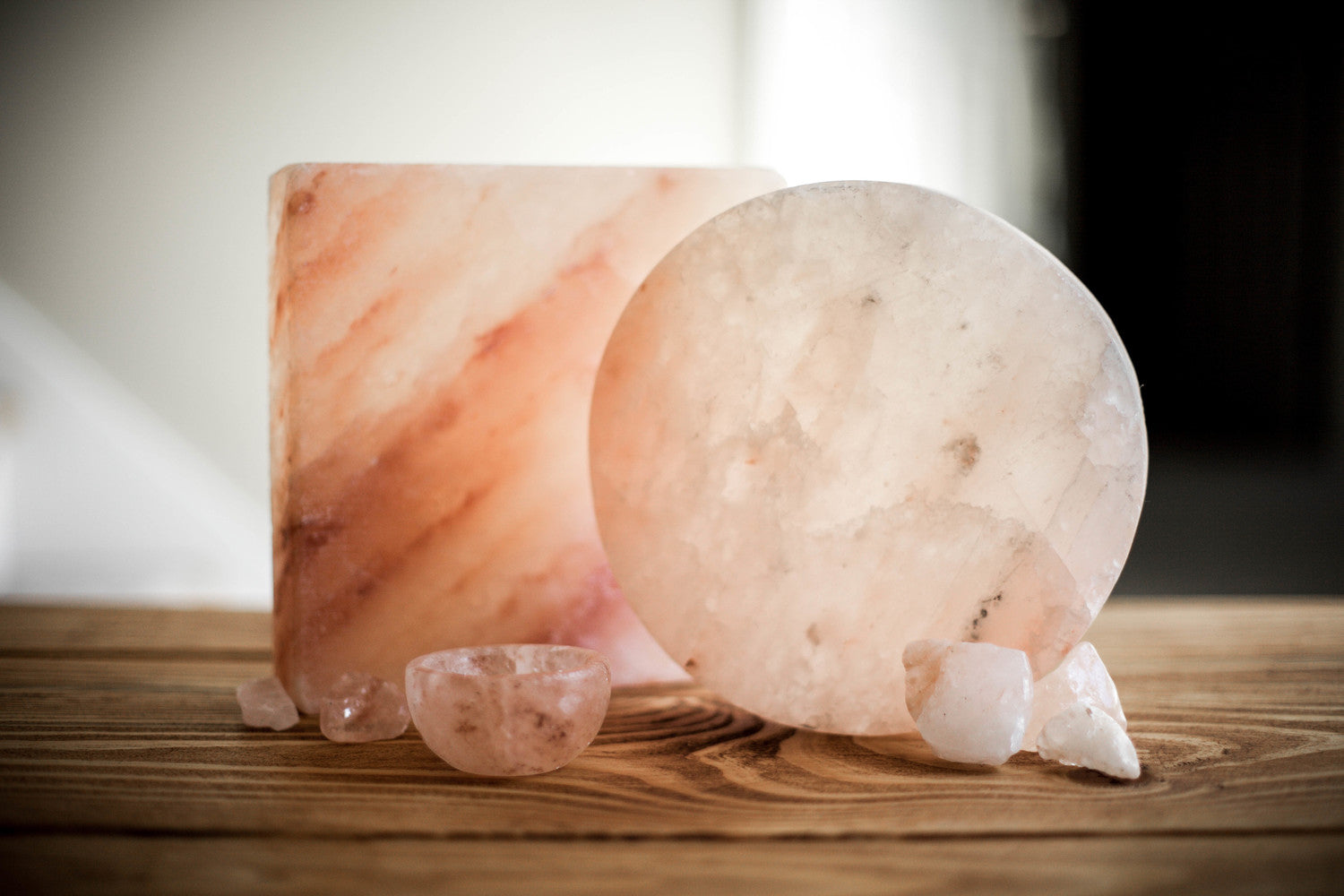Your basket is empty
Already have an account? Log in to check out faster.

If you like salt on it, you can probably use this for it.
Prep/marinade right on the slab. The time it takes for the flavor to come through is dependent on the texture. For example, tomatoes will pick the salt flavor up almost immediately, but radishes, asparagus, and many meats will take a little bit longer.
Serve appetizers or finger foods. Not only is it nice to look at, but it's also antimicrobial and a definite conversation starter. Pop it in the freezer for a bit, and when you pull it out it will even be cold enough to keep something (like sushi or smoked salmon) chilled.
Cook or grill directly on it! Our personal favorite, this method takes a bit of patience, but my-oh-my is it worth it. In the words of one of our past customers - "It changed my life, I haven't burnt a steak since I got it!" No. Joke. Whether you grill vegetables, red meat, pizza, eggs or fish, this 2 inch thick piece of awesomeness will turn out one of the best dishes you've ever made. And really, you can take our word for it....
This information is taken directly off of the card which we send along with any purchased salt slab, so don't worry - there won't be a quiz.
Welcome to a new, unique way of cooking. The Himalayan salt slab is not your ordinary cooking device. The salt slab can be used to tenderly cook meat directly. The salt slab can be used to serve vegetables, fruits, cheeses and other antipasto. The salt slab can be chilled for serving delicious sushi or succulent deserts. The versatile salt slab is able to achieve all these different uses due to its incredibly dense nature and ability to efficiently conduct heat. The salt slab is the perfect tool to evenly cook while seasoning. But, as with many of the world’s best dishes, cooking with the salt slab takes patience.
Salt slabs can crack or pop if they are heated or cooled too quickly. Below are some instructions to best utilize your new salt slab.
1. Salt slabs can be used on a grill or in the oven. Some will say the slab can be used on a range – either gas or electric – but due to the possibility of popping we suggest using the salt slab in an enclosed heating source, at least the first time.
2. Always keep at least ½ an inch between the flame or heating element and the salt block.
3. Heat the Salt Slab in Stages! This is the most important step of salt slab cooking. Depending on the heat you want you should slowly heat up the slab in three stages: Stage 1 - low temperature of around 150ͦ; Stage 2 – medium temperature of around 300ͦ; and Stage 3 – high temperature of around 500ͦ.
4. Spray or drizzle some olive oil on the slab, place your meat or veggies directly on the heated slab, and prepare for deliciousness.
Allow the salt slab to cool. Moisten the salt block with a damp sponge. Scrub with a soft brush or green scouring pad to remove any leftover substances and wipe clean with the sponge. Dry with a paper towel or clean cloth. The antimicrobial properties of the salt makes the use of soaps and detergents unnecessary.
Due to the antimicrobial properties mentioned above, combined with salt being a natural preservative, there isn't anything special you have to do when storing it. When it gets warm, you may notice that it gets a bit greasy - that's just the salt absorbing any moisture in the air. To avoid that, you can always store in a large Ziploc bag, but it is not necessary to preserve the life of the slab.
Take good care of your slab and you could have a new cooking sidekick for years to come!
Be the first to know about new collections and exclusive offers, and get 15% off your next order! Get started now!